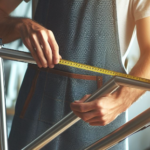Understanding how to measure a bike is crucial for cyclists of all levels. Whether you’re purchasing a new bike, fitting it for optimal comfort, or ensuring it meets your specific needs, accurate measurements are paramount.
Proper bike measurement goes beyond simple height considerations; it encompasses various aspects like frame size, inseam length, reach, and stack height. Measuring a bike helps cyclists enhance their riding experience, prevent discomfort, and maximize performance potential.
In this comprehensive guide, we’ll teach you how to measure a bike, providing step-by-step instructions. So, let’s dive in and explore the essential techniques for measuring a bike accurately.
Here is all you need to know!
Why Measure Your Bike?
Accurate measurement of your bicycle is paramount, whether you’re customizing your current ride or selecting a new steed. It’s the cornerstone of a great cycling experience.

Proper bicycle measurements tailor the bike to your body, ensuring that each pedal stroke is efficient and comfortable. This customization can significantly boost your performance, allowing for longer, more enjoyable rides.
Moreover, precise measurements are your best defense against common cycling ailments, from minor discomforts to more serious injuries.
Measuring your bicycle isn’t just about fitting a machine to your measurements. It’s about creating a seamless union between cyclist and cycle. This paves the way for a smoother, safer, and more satisfying journey.
What You’ll Need to Measure a Bike?
To measure a bike accurately, you’ll need a few essential tools: a tape measure for length, a ruler for smaller dimensions, a level to ensure evenness, and a plumb bob for vertical alignment. Begin by positioning your bicycle on a flat surface.

Use the tape measure to determine the height and length, ensuring it remains parallel to the part being measured. A ruler is perfect for smaller areas like the handlebar diameter. For a truly level seat and handlebars, employ the level tool.
Lastly, the plumb bob can help find the bicycle’s true vertical line, crucial for assessing frame size. With these tools and methods, you’ll secure precise measurements for a bicycle that fits like a glove, enhancing your cycling experience.
What You Need to Measure First?
When beginning the quest for the ideal bicycle, prioritize your height and inseam measurements. Your height guides the frame size selection, ensuring a comfortable reach without being too tall or too short.

To measure, stand against a wall, place a book on your head, and mark where it meets the wall; then use a tape measure from the floor to the mark. For the inseam, which affects saddle height and standover clearance, stand with your back against the wall and a book between your legs, spine up; measure from the top of the book to the floor.
These initial steps are crucial in narrowing down the bike options that will provide you with the best fit and riding experience.
How are Bikes Measured?
Bicycles are measured by assessing various aspects of their geometry to ensure they align with the rider’s body for an optimal fit. The frame size is determined by measuring the length of the seat tube, which is crucial for leg extension during pedaling.

Handlebar width and reach are gauged to match shoulder width and arm length, providing a comfortable grip without strain. Wheel size is also considered, affecting the bike’s handling and responsiveness.
By meticulously measuring these components, cyclists can find a bicycle that not only fits well but also enhances their riding experience, leading to improved comfort, efficiency, and control on their cycling journeys.
This precise approach to bicycle measurement is essential for any rider looking to achieve harmony with their bicycle.
How to Measure a Bike?
Following are 4 ways you should know to find out how to measure bike size:
1. Frame Size
The frame size of a bicycle is pivotal for ensuring a comfortable and efficient ride. It correlates directly with the rider’s height, affecting the ease of reaching the pedals and handlebars.
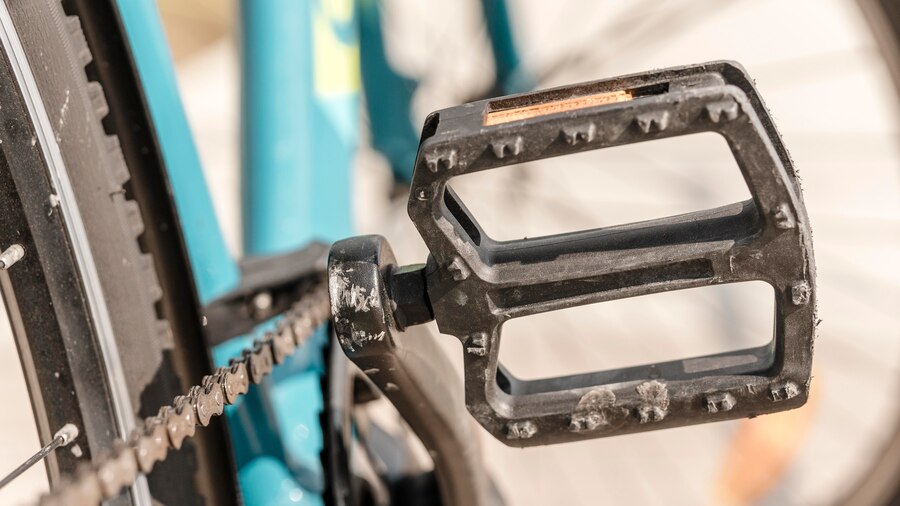
To measure the frame size, stand over the bicycle’s top tube and measure the distance from the ground to the top of the tube, just below the seat post. Ensure there’s a clearance of 1-2 inches for road or 2-4 inches for mountain bikes.
Use a tape measure to record the length from the center of the crank to the top of the seat tube, which gives the frame size.
2. Wheel Size
Wheel size significantly influences a bike’s handling and performance. Road bikes typically feature larger wheels for speed and efficiency, while mountain bikes have smaller, robust wheels for maneuverability on rough terrain.

To measure the wheel, place your bicycle upright and measure the diameter of the wheel from the ground to the top edge, passing through the center of the wheel. Additionally, measure the tire width from one side to the other to determine the appropriate tire size for replacements or upgrades.
3. Handlebar Width
Handlebar width is crucial for control and comfort during rides. It should match the rider’s shoulder width for optimal support and maneuverability.
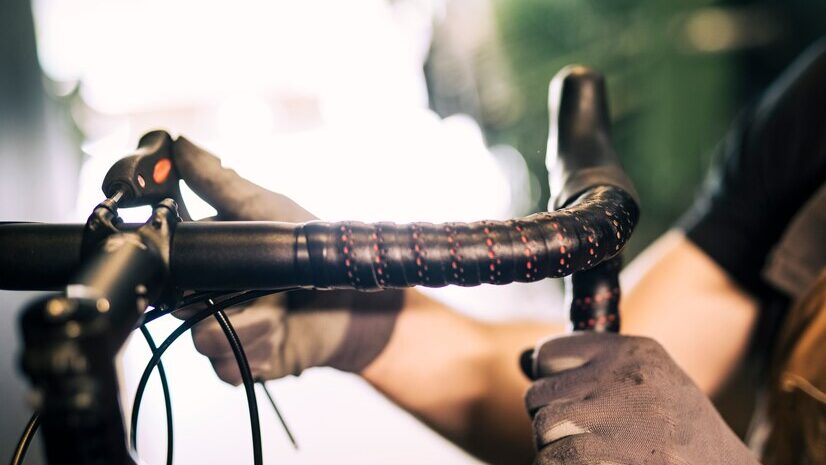
To measure handlebar width, extend the tape measure across the end of one handlebar to the other, ensuring it’s horizontal to the ground. This measurement dictates the size of the handlebars needed for a personalized and comfortable riding experience.
4. Seat Height and Position
The right seat height and position are essential for a comfortable ride and preventing strain or injury. A properly adjusted seat supports efficient pedaling and power transfer. To measure seat height, sit on the bicycle with one heel on the pedal at its lowest point; your leg should be straight.
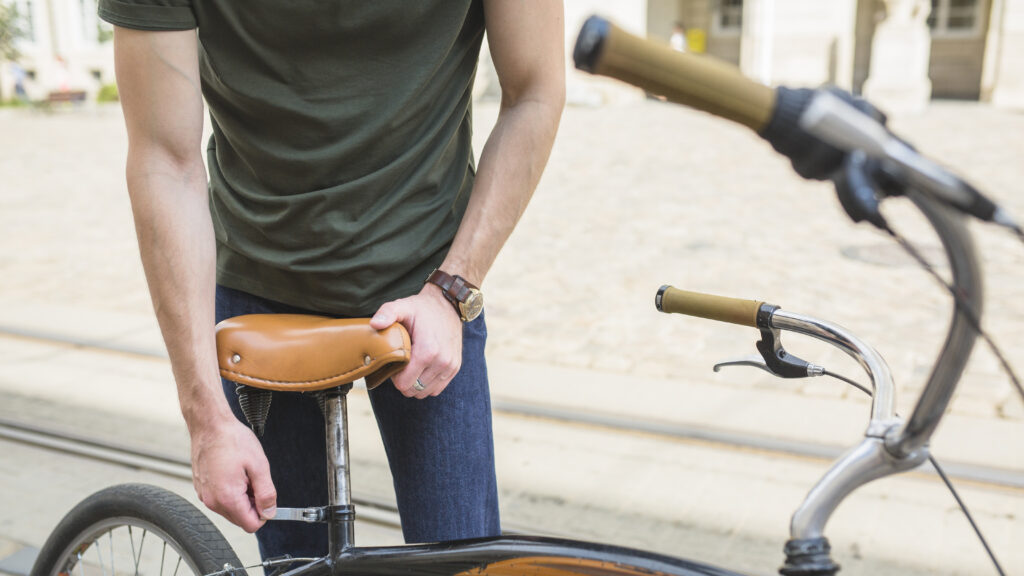
Adjust the seat height until this position is achieved. For seat position, ensure when the pedals are horizontal, your front knee is directly above the pedal spindle. This alignment ensures a comfortable and effective riding posture.
How Do I Know If My Bike Fit Is Right?
Determining the correct bicycle fit involves comparing your body measurements to standard bike size charts, which serve as a reliable starting point. A well-fitted bicycle should allow you to pedal comfortably without overextending or straining your legs, indicating the seat height is appropriate.
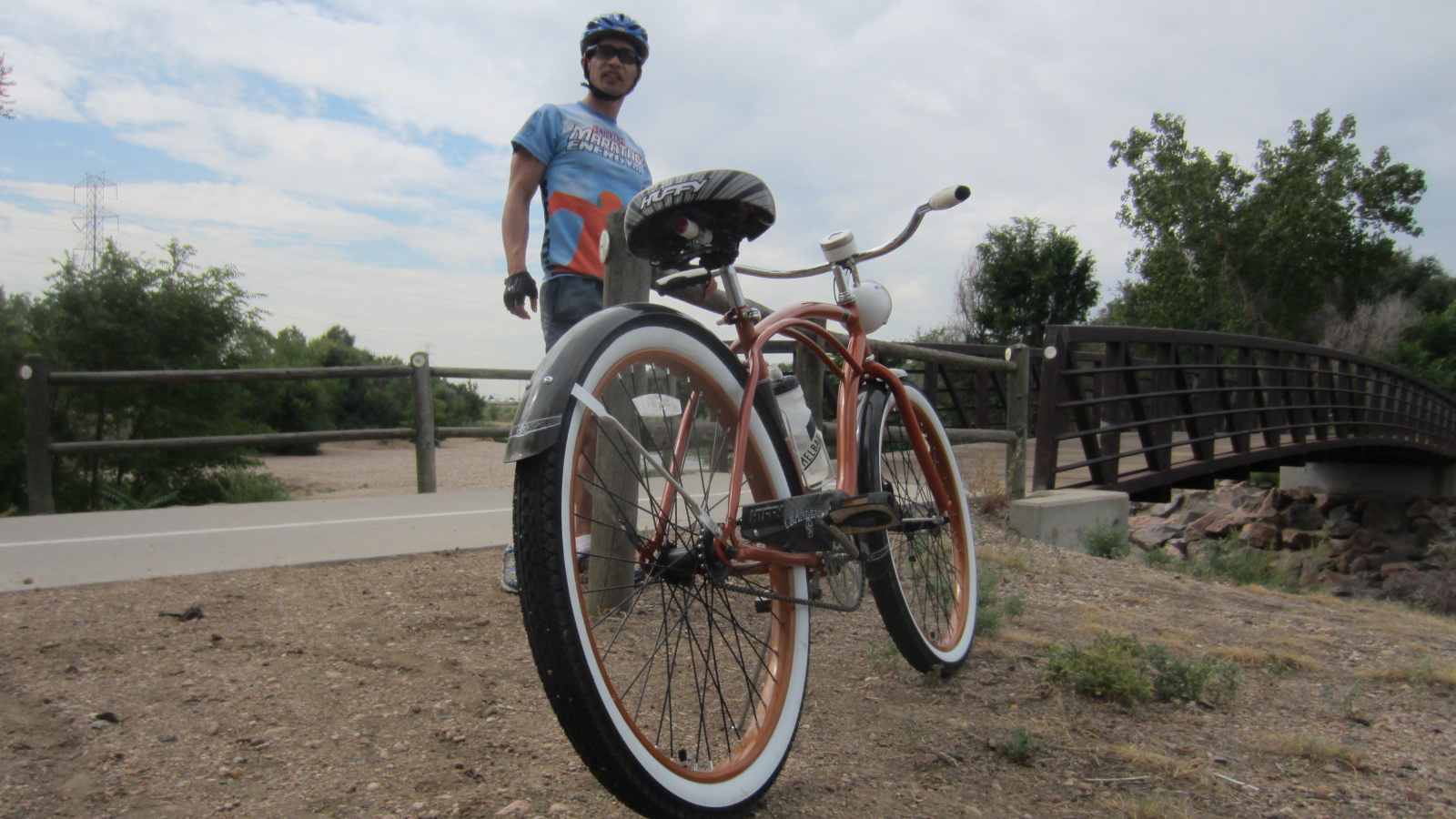
Your arms should be slightly bent when holding the handlebars, suggesting the reach is neither too long nor too short. The handlebar height should enable a natural posture without causing back or shoulder discomfort.
When seated, your knee should be just over the pedal spindle when the pedal is at 3 o’clock. If your measurements align with these criteria and the bike chart recommendations, you can be confident that your bicycle fit is tailored to your physique, enhancing your cycling experience and performance.
Always remember, comfort is key; if you feel good on the bicycle, it’s a strong sign that the fit is right for you.
How to Measure a Bike for a Kid?
Measuring a bike for a child is essential to ensure a safe and enjoyable riding experience. The key is to find a bicycle that allows the child to sit on the saddle and touch the ground with their toes, providing stability without compromising the ability to pedal efficiently.

Start by measuring the inseam of the child’s leg from the ground to the crotch and use this measurement to find the appropriate bicycle wheel size. Generally, kids’ bikes are categorized by wheel size ranging from 12 inches for toddlers to 24 inches for older children.
It’s also important to consider the adjustability of the seat and handlebars to accommodate growth. Avoid bikes where the child has to stretch to reach the pedals or handlebars, as this can cause discomfort and control issues.
Always prioritize a bicycle that can be adjusted to fit the child rather than one they will ‘grow into’ for immediate safety and comfort.
Conclusion
Measuring a bike correctly is essential for a tailored fit and optimal riding experience. This precise guide on how to measure a bike has covered the crucial aspects: frame size, wheel size, handlebar width, and seat height and position.
Regular checks and adjustments ensure your bicycle remains a perfect match for your body, providing comfort and enhancing performance. We invite you to share your experiences and questions on bicycle measurements.
Your feedback helps us improve and assists fellow readers in their journey to a flawless bike fit. Remember, a well-measured bicycle is your ticket to an enjoyable and efficient ride.
FAQs
Measure the frame from the center of the crank to the top of the seat tube.
5’9″ men require either a 54-56 cm road bicycle or a 17-18 inch mountain bicycle.
26 inches refers to the diameter of the bike’s wheels. Commonly found on mountain bikes, providing stability and durability.
A 20-inch bicycle is suitable for kids aged 6-8, depending on their height and riding experience. Check sizing charts for accuracy.



